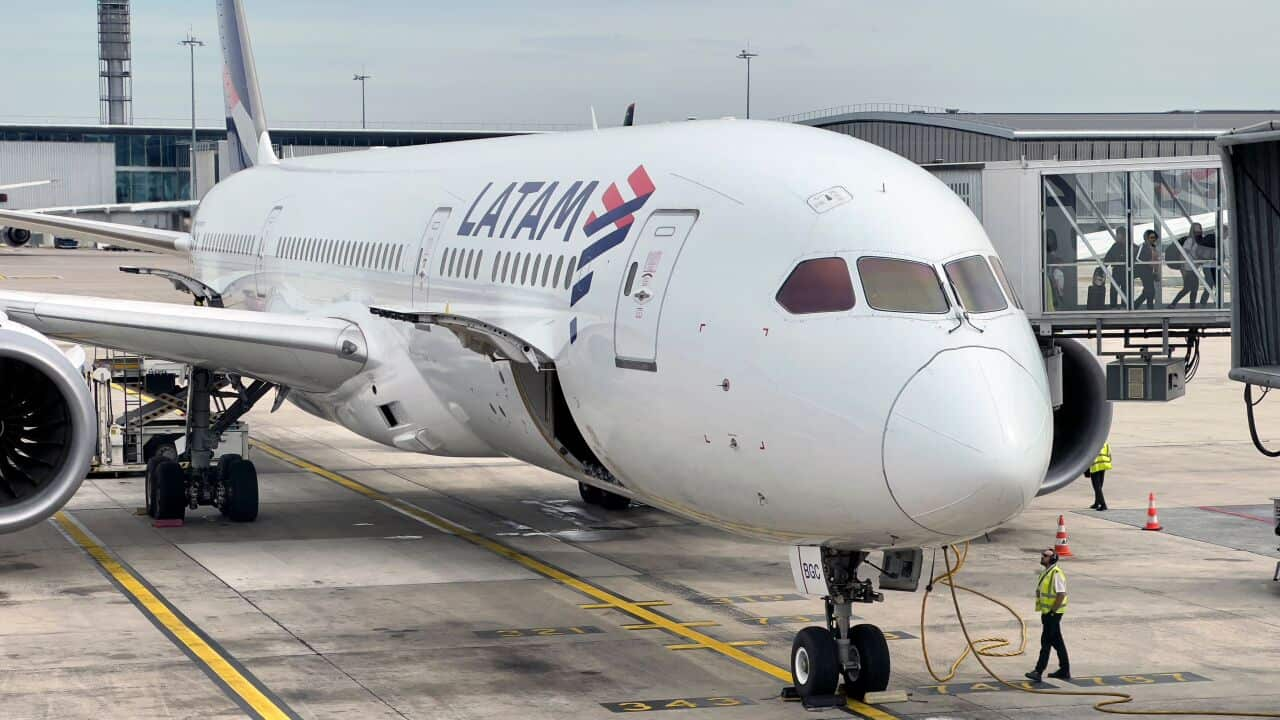Key Points
- At least 50 passengers were injured and 12 hospitalised after the plane experienced a "technical problem".
- The aircraft is an eight-year-old Boeing 787-9 Dreamliner, according to flight tracking website FlightRadar24.
- Boeing said it was working to gather more information and will provide any support to the airline.
At least 50 people were hurt when a Boeing 787 operated by LATAM Airlines dropped abruptly mid-flight from Sydney to Auckland on Monday, according to the airline and a New Zealand health service organisation that treated the injured.
The aircraft experienced a strong shake and as a result 10 passengers and three cabin crew members, were taken to a hospital, the South American carrier said as it investigates the cause.
Passengers on the Boeing 787 Dreamliner told New Zealand media that the plane quickly lost altitude, flinging some towards the ceiling.
Brian Jokat, who was on board the flight, said he saw a passenger struck the roof of the plane before falling back down and hitting his ribs on an armrest.
"The plane, unannounced, just dropped. I mean it dropped unlike anything I've ever experienced on any kind of minor turbulence, and people were thrown out of their seats, hit the top of the roof of the plane, throwing down the aisles," passenger Brian Jokat told the BBC.
A spokesperson for the Chile-based airline said "a technical event during the flight" had "caused a strong movement".
"The plane landed at Auckland Airport as scheduled," the airline said, adding it "deeply regrets any inconvenience and discomfort this situation may have caused".
US manufacturer Boeing has suffered a series of safety issues in recent years, including the fatal Lion Air and Ethiopian Airlines crashes of 737 MAX planes in 2018 and 2019 that killed more than 350 people.
It was not immediately clear what caused the LATAM incident.
Jokat said that after the plane landed, the pilot came to the back of the cabin.
"I asked him 'what happened?' and he said to me 'I lost my instrumentation briefly and then it just came back all of a sudden'," Jokat said.
'Gathering information'
"We are working to gather more information about the flight and will provide any support needed by our customer," Boeing said in a statement sent to AFP.
Gerard Campbell of the St John New Zealand ambulance service said medics were first made aware of the problem as the plane descended into New Zealand's largest city.
"Our ambulance crews assessed and treated approximately 50 patients, with one patient in a serious condition and the remainder in a moderate to minor condition," Campbell said.
"Twelve patients were transported to hospital," he said.
At least three of those treated were cabin crew.
Mobile phone footage posted by the NZ Herald showed concerned crew and passengers attending to one injured woman while flight attendants asked if there was a doctor aboard.
Data from airline tracker FlightAware showed the plane lost altitude about two hours into the three-hour flight.
Boeing is still reeling from a near-catastrophic incident in January when a fuselage panel on a Boeing 737 MAX 9 Alaska Airlines jet blew off mid-flight.
Last week a Boeing 777 jetliner bound for Japan had to make an emergency landing shortly after takeoff from San Francisco when a wheel fell off and plunged into an airport parking lot, damaging several cars.
Also last week New Zealand's prime minister was forced to take a commercial flight to Australia for high-level meetings because of a last-minute problem with a New Zealand Defence Force Boeing 757 aircraft.
New Zealand's Transport Accident Investigation Commission said it was "aware of (Monday's) reported incident" and was "gathering further information to inform a decision as to whether to open an inquiry".
According to a statement from the Chilean General Directorate of Civil Aeronautics (DGAC), New Zealand will take the lead on investigating the incident, while the DGAC plans to send its own representative to participate as well.
LATAM said passengers destined for Santiago would now leave New Zealand on Tuesday evening.











